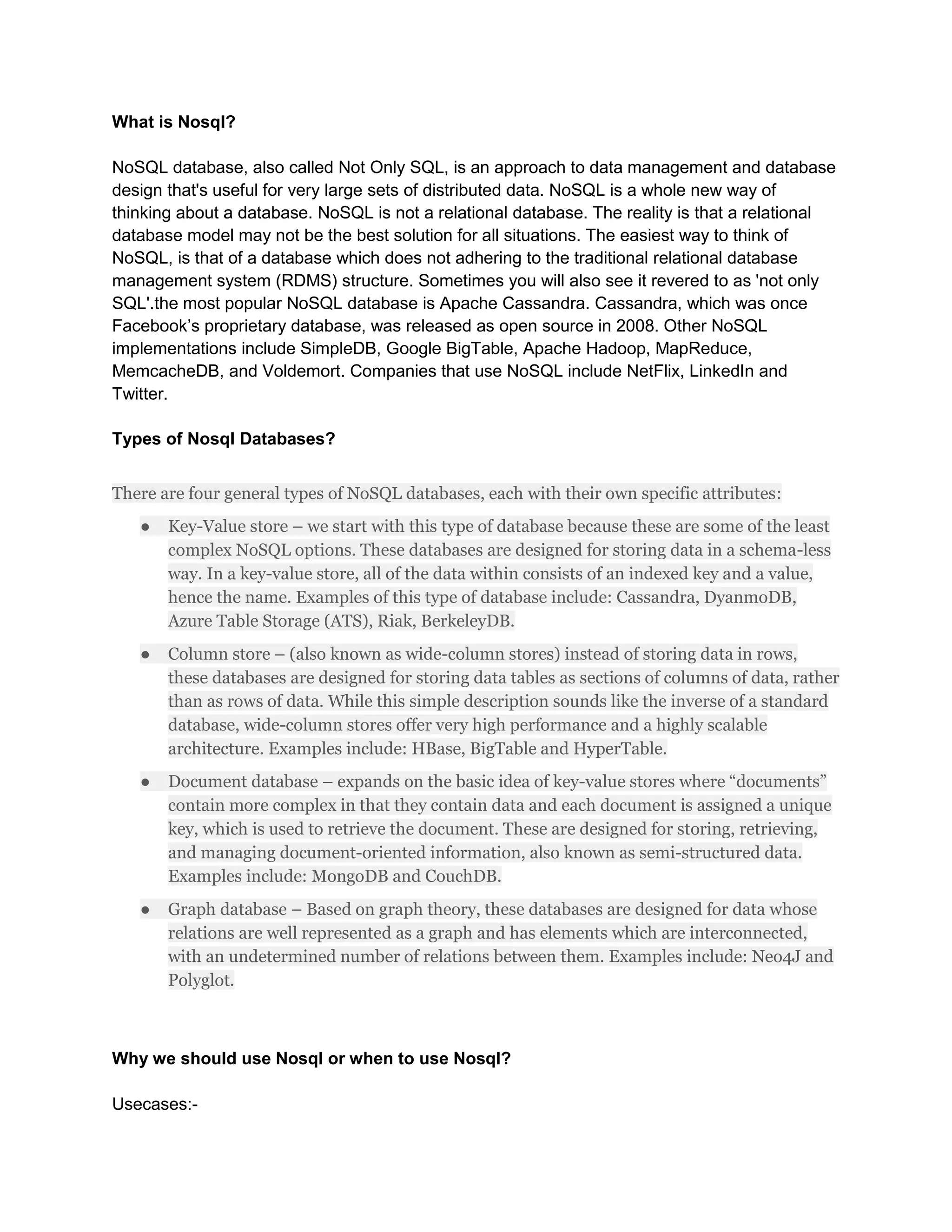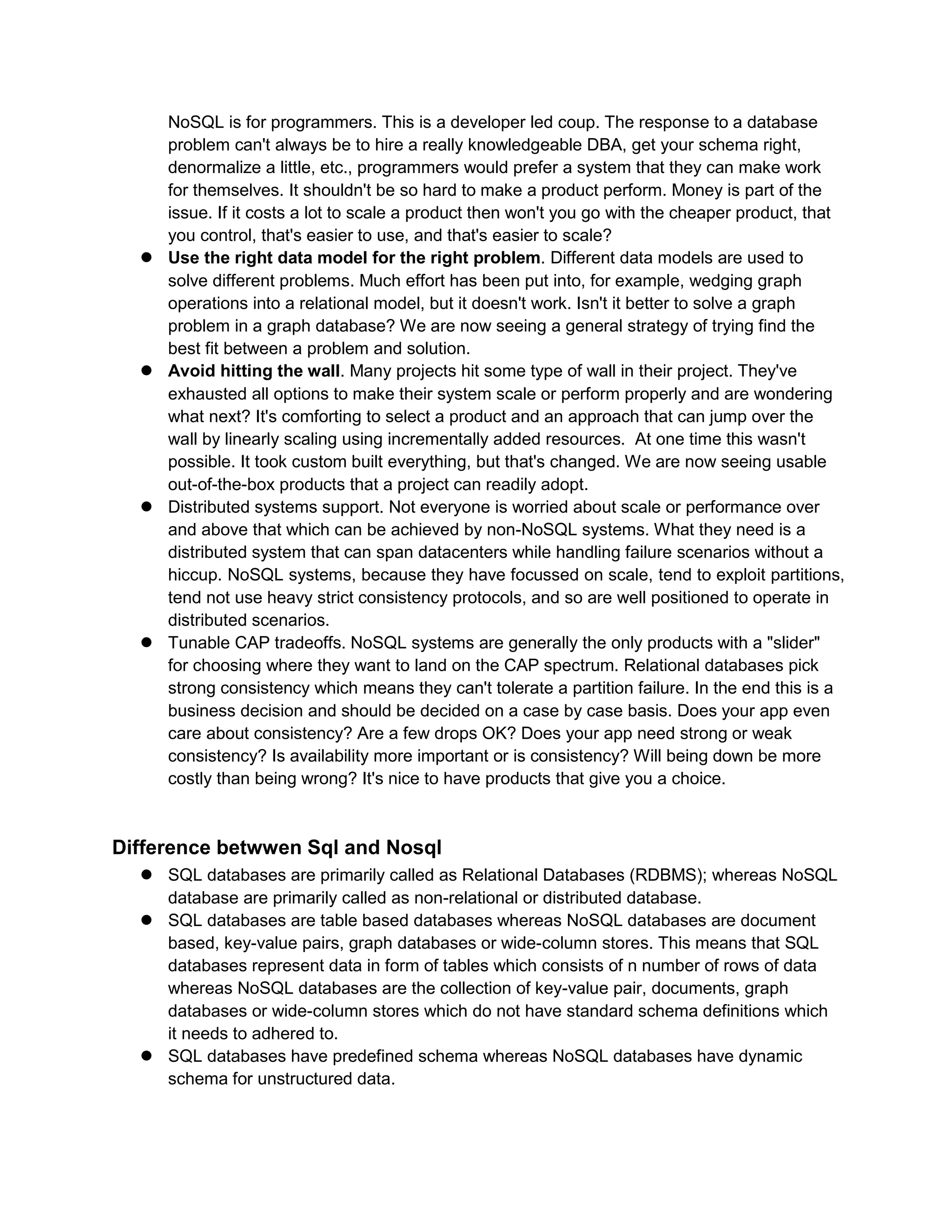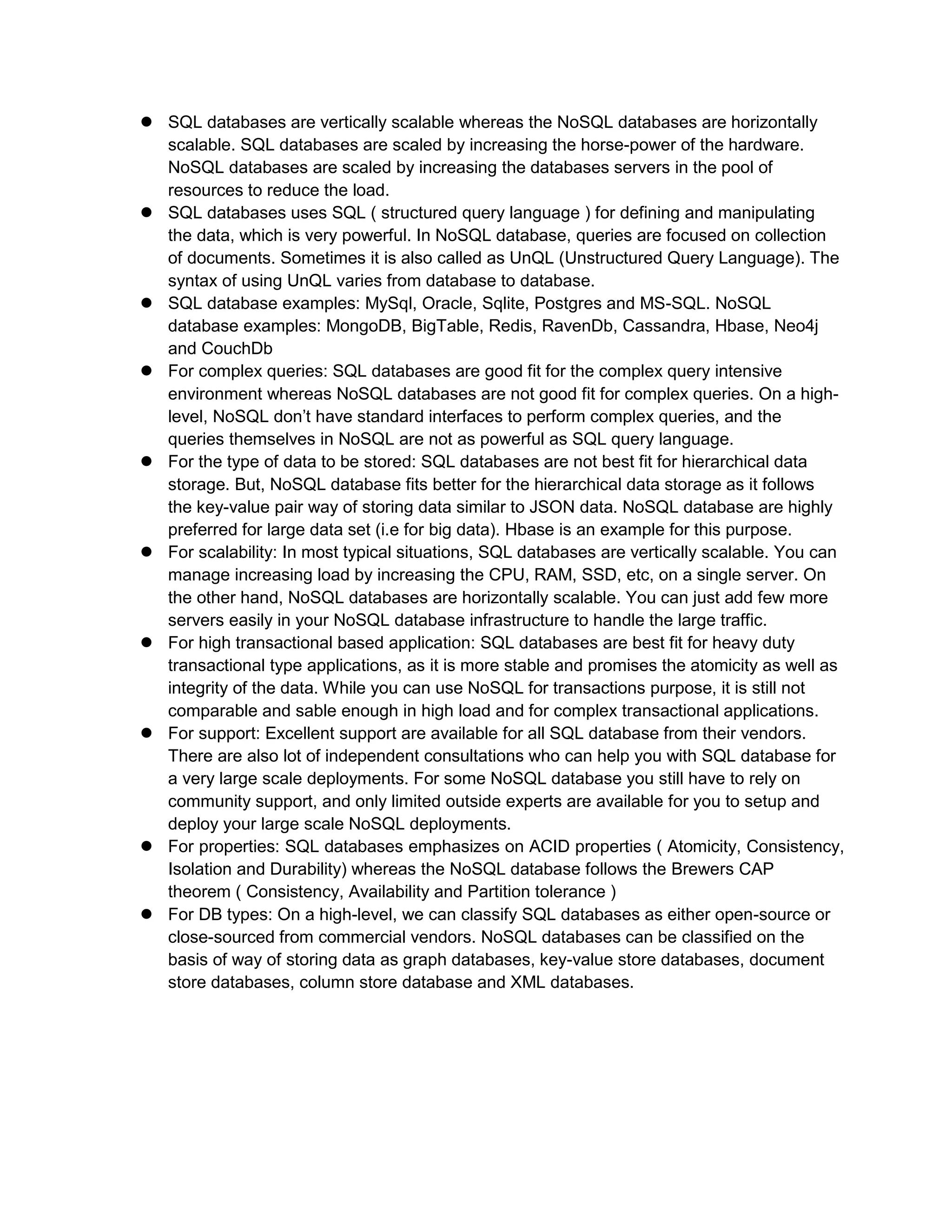NoSQL databases, also known as non-relational databases, provide a flexible data management solution for large distributed data sets, utilizing various structures such as key-value pairs, documents, columns, and graphs. They are designed for use cases requiring high performance, scalability, and ease of use, particularly in big data environments, enabling efficient write operations and schema flexibility. In contrast to SQL databases, NoSQL systems lack strict schemas, offer horizontal scalability, and prioritize availability and partition tolerance over ACID properties.




